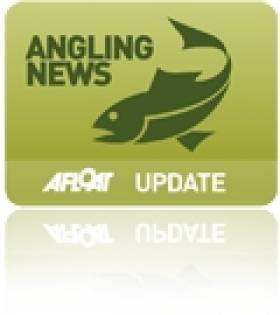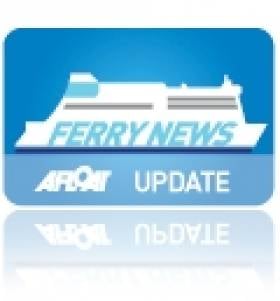Displaying items by tag: tipperary
Two Prosecuted For Illegal Fishing of Spawning Salmon
#Angling - Two men have been prosecuted in Co Tipperary for illegal fishing of spawning salmon.
Michael Harding of Bansha and Neill Collins of Cullen were prosecuted by Inland Fisheries Ireland (IFI) following investigations on the River Aherlow at Angelsboro, Co Limerick on 2 January this year.
IFI fishery officer Noel Power told Judge William Early at a sitting of Fermoy District Court on 3 May that both men has been observed fishing by night with a lamp and a spear.
Having heard the evidence, Judge Early convicted both men and levied fines on each: €350 for Collins and €300 for Harding, who informed the court he was unemployed. Both men were also ordered to pay costs amounting to €418.90.
"Wild Atlantic Salmon are part of our heritage," said Minister Fergus O’Dowd following the prosecution, "and the killing of spawning fish is an environmental outrage.
"I once again commend the work of IFI staff, working in remote areas, in the worst of weather, late at night protecting our wild salmon."
IFI reminds all anglers that interference with fish over their spawning beds is a serious offence, and that its staff are involved trying to stamp out this activity.
Much illegal fishing takes place at night, and IFI staff patrol the rivers during winter nights to ensure the protection of fish stocks.
"This illegal fishing is both barbaric and a threat to spawning salmon," says the fisheries agency. "Spears and modified forks are sometimes used in tandem with lights in the illegal killing of spawning salmon."
New Angling Guides and Salmon Bait Restrictions
#Angling - Inland Fisheries Ireland has recently added two new guides to its list of resources for anglers fishing in Ireland.
The West of Ireland Sea Angling Guide covers the region from Westport, in Clew Bay, south to the rocky headlands of North Clare, including Galway Bay, Connemara, Killary, Louisburgh, Clew Bay, and the offshore islands of Inisbofin, Inisturk and the Aran Islands.
The guide is in no way comprehensive, and the list of marks and venues is just a sample of what is available across the region's waterways. There are literally hundreds of shore marks in the region that have rarely, if ever, been fished, but the potential waiting to be explored is immense. Getting off the beaten path and trying a new mark may produce the fish of a lifetime.
In addition, the County Sligo Game Angling Guide covers the main game angling waters in the district. It contains information on the location of each fishery as well as details in relation to contacts, permitted angling methods, angling seasons, etc.
Meanwhile, IFI has received numerous submissions from individual anglers, angling organisations and angling tourist providers regarding restrictions on the use of prawn/shrimp as a salmon angling bait on the River Suir for the 2013 season.
IFI is interested to hear the views of other angling stakeholders or from those who wish to make further submissions.
Submissions can be made to IFI Clonmel by email at [email protected] or by post to Inland Fisheries Ireland, Anglesea Street, Clonmel, Co Tipperary.
The closing date for receipt of submissions is 28 February 2013.
Enter European Endeavour
The European Endeavour will enable P&O to offer up to three Ro-Pax style sailings a day on the 7.5 hour route instead of the previous two-plus one Ro-Ro (freight-only operated) service. The 180m vessel is no newcomer on the route as over the last two years the ship has deputised to cover the annual overhauls of the routes' vessels.
The Spanish built vessel directly replaced the Ro-Ro freight ferry Norcape, which made her final sailing on the central corridor route, with the 1979 built vessel berthing at Liverpool's Huskisson Dock in the early hours of Sunday morning. Norcape could take 125 drop trailers but only had 12-passengers cabins (for freight accompanied truck-drivers).
Only last year the Japanese built vessel returned to the Irish Sea route as the Norcape but originally started a career with the B+I Line as their Tipperary on the Dublin –Fleetwood route. The UK port was switched to Liverpool in 1988, in the following year she was sold to North Sea Ferries.
The standing down of the Norcape represents the last vessel of the former B+I Line fleet to have any association with the Irish Sea. In 1991 the Irish state owned shipping company was sold to Irish Continental Group (ICG) which is a parent company of Irish Ferries. At that stage Irish Ferries operated only on the continental routes to France.
To read more about Norcape's final sailing on the Irish Sea route, click here.
Farewell to Former B+I Line Freight-Ferry
This will enable P&O to offer up to three Ro-Pax style sailings a day on the 7.5 hour route instead of the previous two-plus one ro-ro (freight-only operated) service. The Norcape could take 125 drop trailers but only had 12-passenger cabins (for freight accompanied truck-drivers).
Norcape was only re-introduced onto the Irish Sea last year but made her final departure tonight as the vessel headed into a foggy Dublin Bay.
In 1979 the Japanese built vessel was launched as the Puma for P&O but was chartered to B+I Line and renamed Tipperary. During the 1980's the vessel first operated a then new Dublin-Fleetwood route jointly operated with P&O, alongside Tipperary's Ro-Ro sister, Ibex. The P&O brand name Pandoro cleverly stood for P and O Ro, their roll-on roll-off freight division.

Cut-away deck profile of M.V. Tipperary and sistership of M.V. Ibex
The route's UK port switched to Liverpool in 1988 with Tipperary remaining on the route until sold to North Sea Ferries in 1989 and renamed Norcape. Prior to her transfer to the North Sea, the Tipperary collided with the 4,674grt bulker Sumburgh Head off the entrance to Dublin Port on 18 February 1988. For a report and photo taken of the two vessels which met at the port last year under different names click here.
Like the Tipperary the Sumburgh Head was built in Japan too by Hashihama Zosen KK, Imabari in 1977, yard no. 624. During her Dublin Bay incident, the vessel was owned by Christian Salvesen (Shipping) Ltd based in Edinburgh.
In 1990 she was sold to Barra Head Shipping Ltd and renamed Hood Head under the Irish flag. Three years later sold again to the KG Jebsen group and renamed Husnes.
The Panamanian flagged bulker remained with the Norwegian owner until 2003 when sold to her current owners, Wilson Shipowning AS of Bergen and renamed Wilson Tana, this time under the Maltese flag.
Stena to Close Larne-Fleetwood Route
The route has made significant losses over recent years and to running an aging fleet on the 7-hour service. Stena cite that investment in new tonnage was not an option due to higher capitol costs. "No business can continue to carry such losses on an ongoing basis so there is no alternative but to close the route at the end of this year," he added.
The trio of vessels, Stena Leader (1975/12,879grt), Stena Pioneer (1975/14,426grt) and Stena Seafarer (1975/10,957grt) serve the link between Lancashire and Northern Ireland which takes freight, cars and their passengers but does not cater for 'foot' passengers.
Late last month a fire took place in the engine room of the Stena Pioneer during a sailing to Fleetwood, the fire was extinguished using onboard equipment and fortunately without incident to crew or passengers.The Stena Pioneer was operated by B&I Line as their Bison in a joint service with Pandoro on the Dublin-Liverpool route between 1989-1993.
Under the new agreement, Stena Line's take-over of Belfast-Heysham, the port is a close neighbour to Fleetwood will include the 13,000 tonnes sisters Hibernia Seaways and Scotia Seaways.The other route aquired is Belfast-Birkenhead (Liverpool) which is significant in that the deal will include the purchase of the chartered 27,000 gross tonnes ro-pax twins, Mersey Seaways and Lagan Seaways. The sisters were built in 2005 at the Visentini shipyard, Italy, which also built the ro-pax sisters Dublin Seaways and Liverpool Seaways.
Measuring 21,000 gross tonnes these vessels operate Dublin-Birkenhead route but remain under DFDS Seaways control and this applies to their freight-only service from the Irish capital to Heysham served by the Anglia Seaways. The 120-trailer freight ferry is also a sister of the Belfast-Heysham pair.
Notably the transaction will see Stena Line enter operations on the Mersey for the first time.The Swedish operator will use the river's Birkenhead Twelve Quays ferryport terminal located on the Wirral, opposite the famous Liverpool waterfront.
Stena Line will not only share the double berth facility with DFDS Seaways but also the Isle of Man Steam Packet (IOMSPCo) which in recent years has operated winter sailings to Douglas. In the summer the Isle of Man ferry operator uses the Liverpool landing stage berth on the other side of the river which is also shared by the 'ferry cross the Mersey' fleet operated by Mersey Ferries.
Shannon Cruiser Crash
A man at the upper controls of a cruiser on the inland waterways jumped to safety just before his vessel hit a bridge in Co Tipperary on Friday last.
The man was believed to be attempting to moor the vessel close to the bridge at Ballina on the Shannon when he lost control. The boat hit one of the bridge arches causing extensive damage to the boat’s upper-level console. It is believed that only for the water level at the time and his quick actions he could have been seriously injured.
There were six people on board the vessel all of whom were in the lower deck and uninjured.
The incident was witnessed by a member of the Killaloe unit of the Irish Coast Guard, who raised the alarm. Rescuers went to the scene and discovered that the cruiser had been extensively damaged.
































































